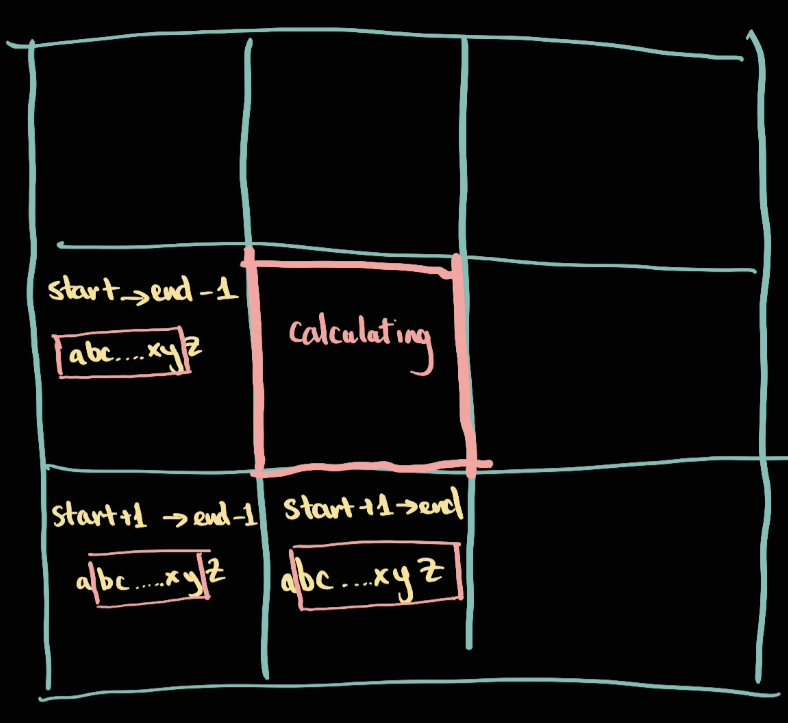Traverse DP Table
Length traversal
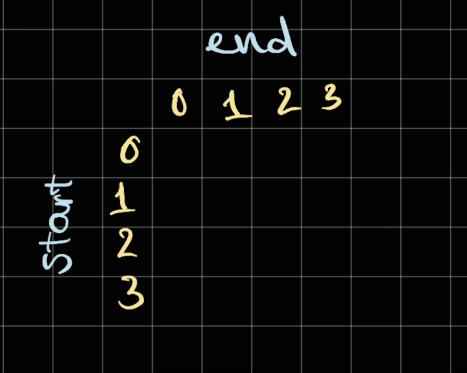
A DP table normally looking like this with left handside is the start index and top is the end index
We normally traverse base on the length, for example, we can start with length = 1.
That means for each start index, we traverse up to the end index so that the distance between start index and end index == 1
Consider the following square:

- At
0, we traverse fromstart = 0andend = 0 - At
1, we traverse fromstart = 1andend = 1 - At
2, we traverse fromstart = 2andend = 2 - At
3, we traverse fromstart = 3andend = 3
Once we done, we increase length = 2, and traverse from start again
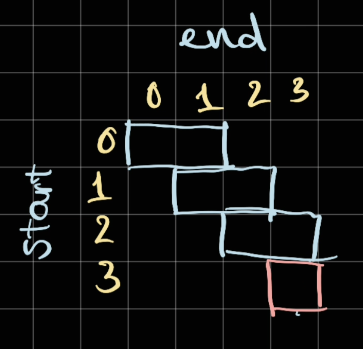
The blue rectangles are the traversal done in this iteration
We similarly do for length = 3 and length = 4
Code
def traverse(nums: List[int]):
dp = [[0 for _ in range(len(nums))] for _ in range(len(nums))]
for length in range(1, len(nums) + 1): # take length nums
start = 0
end = start + length - 1 # Inclusive end
while (end < len(nums)):
dp[start][end] = length
start += 1
end += 1
return dp
traverse([0,1,2,3])
[
[1, 2, 3, 4],
[0, 1, 2, 3],
[0, 0, 1, 2],
[0, 0, 0, 1]
]
Query for a result
Most of the time, we need to re-use previous result. For example, in Longest Palindrome Substring, we can query for the previous state in between start and end
It's fairly simple, for example given the following table.
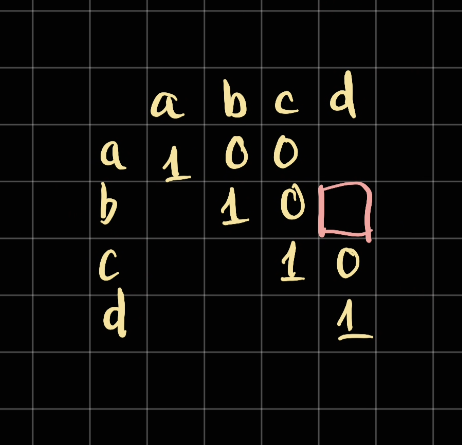
At the moment, we are considering the result of b -> d so in this case is bcd.
To calculate this result, we need to know the result in between b and d, which is c. We can take a look diagonally at start + 1 and end - 1:
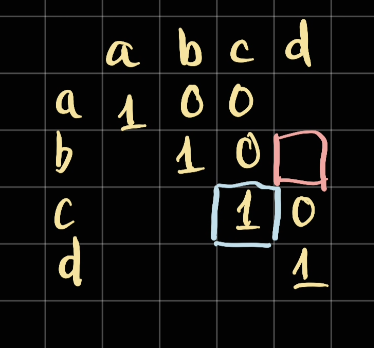
So we know that the result of c is 1
Similarly, to calculate the result of a -> d (abcd) we need the result of the inbetween (bc). We can also follow the same fomular of start + 1 and end - 1
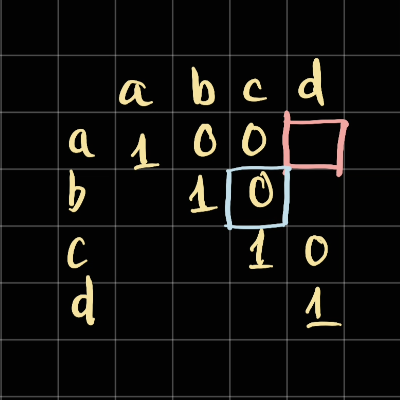
We basically have the following formula:
